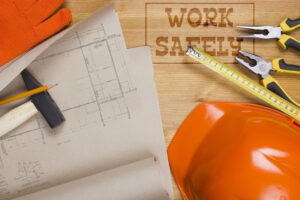 Construction work can be a dangerous business. According to the Occupational Safety and Health Administration (OSHA), one out of every five workplace fatalities is construction-related. Construction jobs can also result in non-fatal injuries to workers. Things as simple as heat illness or complicated injuries like broken bones can result from a lack of safety knowledge on the job site.
Construction work can be a dangerous business. According to the Occupational Safety and Health Administration (OSHA), one out of every five workplace fatalities is construction-related. Construction jobs can also result in non-fatal injuries to workers. Things as simple as heat illness or complicated injuries like broken bones can result from a lack of safety knowledge on the job site.
Construction companies have to provide care, safety, and health training to their employees. Additionally, they must conduct regular inspections and update equipment as needed. Although these steps don’t completely protect workers, they eliminate most of the hazards associated with falls, electrocution, and falling objects; this can save thousands of lives each year.
Here are six common construction site safety hazards to be aware of to protect yourself and others on the job.
1.Working at Great Heights
Doing construction work at great heights and falling is one of the most common causes of fatal injuries to workers. Many federal and state-based laws govern safety protocols and proper training guidelines to ensure employees are well prepared and protected while doing their job. The employee must have received the correct training and proper safety equipment and protocols to work at great heights to prevent accidents.
2.Ladders and Scaffolding
To minimize potential risks with ladders and scaffolding, have the equipment inspected before use. Also, make sure to use the proper ladder or scaffold for the specific job. Do not exceed structural weight limits and ensure that scaffolds are equipped with toeboards and guardrails.
3.Moving Equipment
There are many moving objects commonly encountered on construction sites. Driving these vehicles and being in the neighboring areas can pose a safety risk if something goes wrong. Therefore, safety training is vital to ensuring everyone is safe around moving objects and complicated machineries like cranes and bulldozers.
4.Noise and Hearing Damage
Construction work is extremely noisy, and, as a result, noise is a common construction hazard. Noise volume can have a huge impact on the workers exposed to it all day long. Loud, repetitive, and excessive noise causes long-term hearing problems, like deafness. It can also pose a major distraction and impact a person’s ability to focus, think clearly, and work safely. The employer’s responsibility is to check for and note noise hazards and provide appropriate personal protective equipment (PPE) to employees if needed. Earplugs can work but bear in mind that objects inserted into the ear canal can do damage of their own. Noise-canceling earmuffs are usually the best option.
5.Hand Arm Vibration Syndrome
Hand Arm Vibration Syndrome (HAVS) is caused by working with vibrating tools. It causes changes in the sensation of the fingers, which can lead to permanent numbness of fingers, muscle weakness, and, in some cases, bouts of white finger. It would be unusual for you to develop hand-arm vibration syndrome unless you had used vibrating tools for at least ten years. If you stop working with vibrating tools, it may prevent mild symptoms from becoming worse.
To help prevent HAVS, you should use tools correctly and the right tool for the job. You shouldn’t need to use excessive grip or use a tool for longer than necessary. Take regular breaks of at least 10 minutes away from the tool. Short bursts of work are better than long periods without a break.
6.Electrical Hazards
Most job site accidents involving electricity arise from contact with overhead or underground power cables, electrical equipment, or machinery. Electric shocks are a common cause of falls from ladders, scaffolds, and other work platforms. Only trained electricians must work on wires and cables, and all workers must know where lines are buried.
To minimize the risk of electrical shock, workers should always be using properly rated extension cords, and all damaged cords should be replaced immediately. When working on a site with live wiring, implement a lockout system and ensure that no work moves forward until power has been shut off to the site.
Construction work comes with its fair share of risks, but it is a crucial part of our economic society. Looking out for potential work safety hazards can make your environment secure and the job easier.
Ritter Forest Products recognizes that having high-quality construction products can make all the difference on your job site. Our crane mats and pipeline skids are strong, durable, and trusted in any construction environment. We also offer several other ground products to ensure your projects are safe and efficient.
Get in touch with our knowledgeable team today to discuss what products you need to keep your construction site safe!








